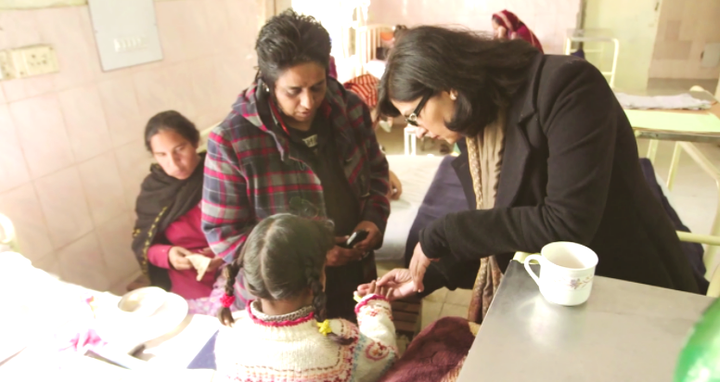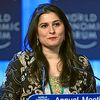
Dr. Sania Nishtar at a health clinic meeting with women and children in Islamabad
As a filmmaker, I am always searching for my next story, hoping to start difficult conversations about issues people shy away from. A few months ago, I partnered with Women’s Action Forum Karachi to create awareness about women’s rights in Pakistan. As a proud citizen and also a filmmaker traveling throughout the country, I have developed an understanding of the importance of ensuring that women understand their legal protections and can navigate the legal system to uphold and defend their civil and human rights.
Through a series of films, our aim is to create step-by-step guides to equip women with tools for their protection and paths to recourse in cases of instances of sexual assault, domestic violence, and divorce. The intersection of women’s empowerment; their social, legal, and political capital; and the public health outcomes of broader society has been central both to my career and my identity.
Laws and social mores that discriminate against women are not unique to Pakistan. Despite frequently lauded progress in the fight for gender equity, women face challenges to their autonomy, equality of opportunity, and civil rights across the globe.
The threat of sexual and physical violence is prevalent throughout the world, from the unrelenting use of rape as a weapon of war in conflict to the enduring struggle for reproductive health rights. The battle for women’s rights as human rights is far from won.
Although women are disproportionately victims of violence, they face other significant barriers in economic participation and leadership opportunity. In 2016, the World Economic Forum estimated that only 59 percent of the global gender gap in economic opportunity had been closed.
Across the world, women on average still continue to make significantly less than men and have to also deal with being major caregivers to children and parents. The odds continue to be stacked against women and that’s why when I hear people say that gender inequality is a thing of the past, I immediately correct them. In our local, regional, national and international institutions we can collectively do a better job at ensuring we develop the enabling environments that work just as well for women as they do for men.
Given these ongoing challenges, the importance of placing high-achieving women in positions of leadership within the global health and human rights arena cannot be underestimated. Doing so sends a message to communities that if you work hard and succeed, there is no ceiling that cannot be shattered.
For these reasons, I strongly endorse Dr. Sania Nishtar’s candidacy for Director-General of the WHO. Her outstanding medical and health management pedigree aside, she has committed that from day one of her time in office she will work alongside Member States to reduce gender disparities within the senior leadership of the organization.
Widespread legal and social discrimination against women is not only itself a violation of our human rights – it is an impediment to improving the health and function of our societies. In my documentaries, I try to show how women everywhere can fight back. Communities characterized by stark gender disparities tend to face greater burdens of various physical, mental, and socio-economic difficulties.

Dr. Sania Nishtar examining a girl in Rawalpindi
Sania has resolutely called for gender equity and diversity within both global financial and regulatory institutions, including the WHO, and broader civil society. Her breadth of experience across the public and private sector, in government and at the grassroots level has demonstrated her ability to navigate and advocate for these principles in different settings and with a diverse set of collaborators and skeptics alike.
Of the current heads of UN agencies, funds, programmes and other entities, only 23 percent of them are women. Just two heads of agencies come from the WHO’s Eastern Mediterranean Region (EMRO) and both are male. There is no head of agency from the South Asia region--a region where a quarter of the world’s population lives. I find it odd that the international system can get it so wrong.
Of course, Sania shouldn’t be given the position because she’s a woman, or from the WHO EMRO region, or from South Asia. From her time as the first female cardiologist, she’s successfully navigated patriarchy and worked twice as those around her to reach the position she’s in today. She’s the best candidate for role of Director-General on merit alone.
Gender inequality, aside from being in direct conflict with the declaration of human rights and the commitment to achieving the highest attainable level of health for all, is simply bad for economics and global development. Responsible leadership in the coming era will necessarily entail taking concrete measures to advocate for and measure progress towards gender equity across developmental and cultural contexts.
Having qualified and dedicated women like Sania in leadership positions will itself be a catalyst for the institutional change that is so urgently needed to promote women’s empowerment worldwide. The shot of Sania becoming the next Director-General of WHO would help reinforce to little girls everywhere that it’s still not easy but it’s possible for women to reach the top and to stay there.
